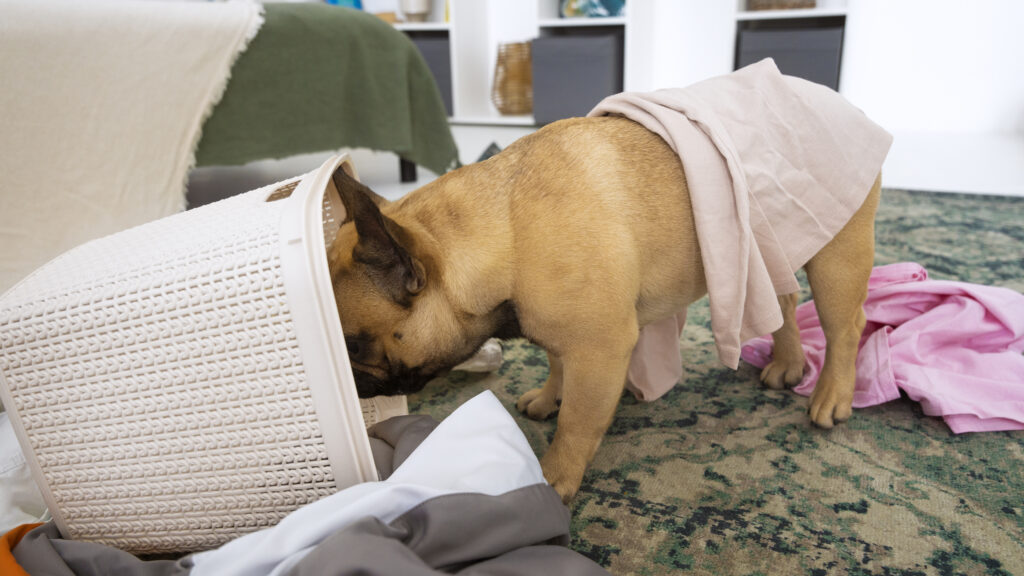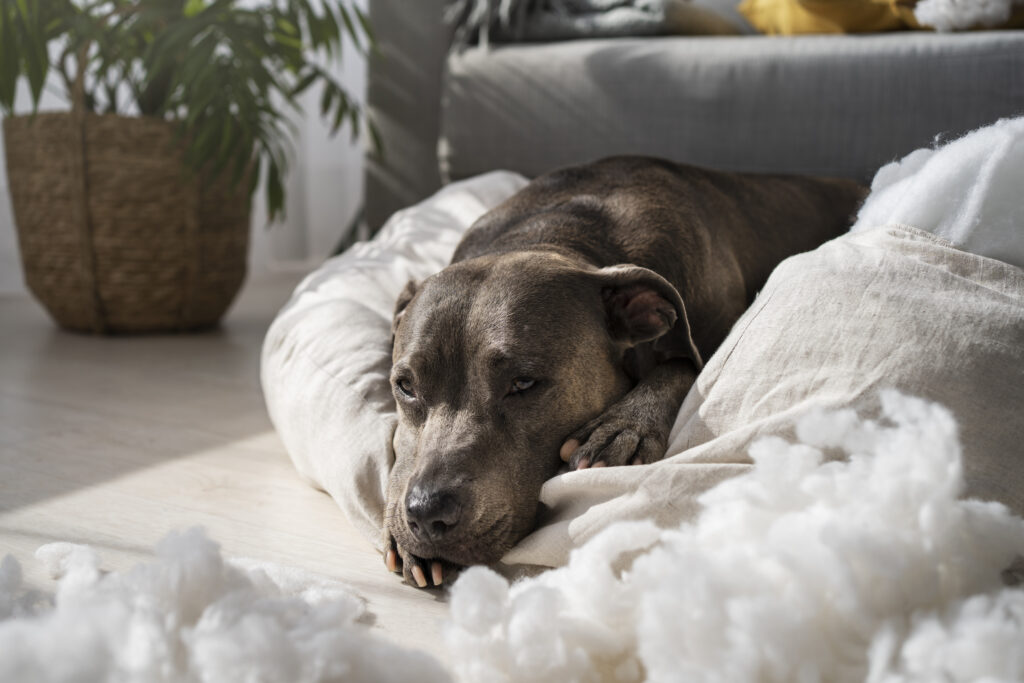Ever wondered why your furry companion seeks solace under the bed, letting out plaintive cries?
“Why does my dog go under the bed and cry?” It’s a common puzzle for pet owners. What drives this behavior, and is it a cause for concern?
In a nutshell, dogs may retreat to confined spaces like under the bed due to anxiety or a need for security.
Understanding the reasons behind this behavior is crucial in ensuring your pet’s well-being.
Here how often to wash dog bed?
Let’s deep dive
What Should I Do If My Dog Goes Under the Bed and Cries?
If your dog goes under the bed and cries, it may be experiencing fear, anxiety, or discomfort. Start by gently coaxing them out with a calm and reassuring voice.
Once they’re out, observe for any signs of injury or illness. Create a safe and comfortable space for them, providing familiar items like their bed or toys.

Gradually introduce positive associations with the area under the bed using treats or praise. If the behavior persists, consult a vet to rule out any health issues.
Here how to train a dog to off the bed?
Addressing the underlying cause of stress or fear is crucial for your dog’s well-being and overall happiness.
Why Does My Dog Go Under the Bed and Cry?
Your dog may go under the bed and cry due to various reasons such as fear, anxiety, or seeking comfort.
The confined space provides a sense of security, mimicking a den-like environment.
Dogs may retreat to such spaces when feeling overwhelmed or scared. Assess external factors like loud noises, new surroundings, or recent changes in routine that might trigger stress.
Health issues, pain, or discomfort could also be a cause.
Observe their behavior, offer reassurance, and consult a vet if the crying persists, ensuring your dog’s physical and emotional well-being is addressed appropriately.
Here, why is my dog digging in his bed?
Is My Dog In Pain If They Go Under The Bed and Cry?
While going under the bed and crying can be a sign of pain in dogs, it’s not the sole indicator.
Dogs may seek hiding spots when stressed, anxious, or unwell. Monitor for additional signs like changes in appetite, lethargy, or altered behavior.
If your dog shows signs of distress, discomfort, or pain, consult with a veterinarian.
Professional evaluation can help identify the root cause, whether it’s a physical ailment or emotional stress.
Prompt attention to your dog’s well-being ensures appropriate care and enhances the chances of a quick recovery if there’s an underlying health issue.
Here, why can’t my dog jump on the bed anymore.
Is My Dog Sad If They Go Under The Bed and Cry?
While going under the bed and crying may suggest emotional distress, it doesn’t definitively mean your dog is sad.
Dogs seek hiding spots when anxious, scared, or unwell. Observe for other signs like changes in appetite, energy levels, or social behavior.
Environmental changes, lack of stimulation, or unfamiliar situations could trigger such behavior.
Spend quality time with your dog, offer comfort, and create a secure environment.
If the crying persists or you notice concerning behavioral changes, consult with a veterinarian or a professional dog behaviorist to address potential underlying issues and enhance your dog’s overall well-being.
Here, how to keep dog out of flower bed?







